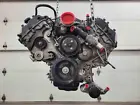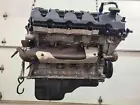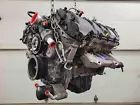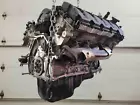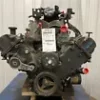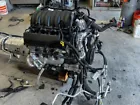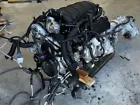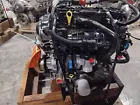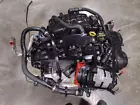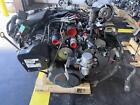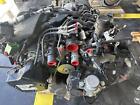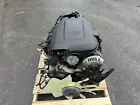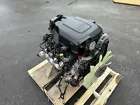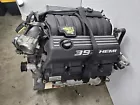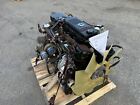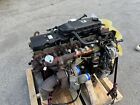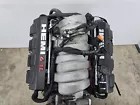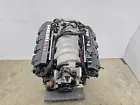Ford Coyote 5.0L Engine
3,500 $ Original price was: 3,500 $.3,000 $Current price is: 3,000 $.
The Ford Coyote 5.0L engine: A Modern V8 Powerhouse
The Ford Coyote 5.0L engine is one of the most celebrated and versatile V8 engines produced by Ford Motor Company. Since its debut in 2011, the Coyote has been widely praised for combining modern engineering sophistication with classic V8 performance characteristics. It powers everything from muscle cars to trucks and has become a favorite among enthusiasts for its robust power delivery, reliability, and tunability. This article explores the Coyote engine in detail, touching on its development history, technical features, performance metrics, and its role in the automotive world today.
The Ford Coyote 5.0L engine: A Modern V8 Powerhouse
The Ford Coyote 5.0L engine is one of the most celebrated and versatile V8 engines produced by Ford Motor Company. Since its debut in 2011, the Coyote has been widely praised for combining modern engineering sophistication with classic V8 performance characteristics. It powers everything from muscle cars to trucks and has become a favorite among enthusiasts for its robust power delivery, reliability, and tunability. This article explores the Coyote engine in detail, touching on its development history, technical features, performance metrics, and its role in the automotive world today.
Origins and Development
The Ford Coyote 5.0L engine was developed to replace Ford’s aging 4.6L Modular V8, which had powered various Ford vehicles for over two decades. The 4.6L Modular was reliable but was increasingly seen as underpowered and outdated for modern performance standards.
Ford engineers aimed to create a next-generation 5.0L V8 that could deliver improved power, efficiency, and emissions compliance while maintaining the traditional American muscle car character. The result was the Ford Modular 5.0L DOHC V8, popularly known by its nickname “Coyote.”
Introduced in the 2011 Ford Mustang GT and the 2011 F-150, the Coyote marked a significant leap in technology. It featured an all-aluminum construction to save weight, dual overhead camshafts (DOHC) for improved breathing at high RPM, and Ti-VCT (Twin Independent Variable Camshaft Timing) for enhanced efficiency and power across the rev range.
Technical Specifications and Design Ford Coyote 5.0L engine
Displacement and Configuration
-
Displacement: 5.0 liters (exactly 4951 cc)
-
Bore x Stroke: 92.2 mm x 92.7 mm (square configuration, optimized for balanced torque and revving ability)
-
Cylinder Count: 8 cylinders in a V configuration (V8)
-
Block Material: Aluminum alloy, designed for weight savings and strength
-
Cylinder Heads: Aluminum, with four valves per cylinder (32 valves total)
Valvetrain
The Ford Coyote 5.0L engine most notable design feature is its Dual Overhead Camshafts (DOHC) setup. Unlike many traditional American V8s that use a pushrod (OHV) design, the DOHC layout allows for:
-
Better high-RPM breathing due to more precise valve timing
-
Four valves per cylinder, improving airflow efficiency
-
Reduced valvetrain inertia, enabling higher engine speeds
The Ford Coyote 5.0L engine also uses Ti-VCT (Twin Independent Variable Camshaft Timing), which allows the intake and exhaust camshafts to be advanced or retarded independently. This technology improves:
-
Low-end torque
-
Fuel economy
-
Emissions
-
Overall engine responsiveness
Fuel System
-
Sequential multi-port fuel injection system delivers precise fuel metering to each cylinder.
-
Later versions incorporate direct injection combined with port injection to further improve combustion efficiency and power.
Compression Ratio and Internal Components
-
Initial models featured a compression ratio of about 11.0:1.
-
Forged steel crankshaft and aluminum pistons ensure durability under high stress.
-
Forged connecting rods and high-strength valve springs improve high-RPM reliability.
-
The engine is designed to rev comfortably to around 7,000 RPM, much higher than typical American pushrod V8s.
Performance Figures
The Ford Coyote 5.0L engine delivers impressive power and torque for a naturally aspirated V8:
| Year/Model | Horsepower (hp) | Torque (lb-ft) | RPM Range for Peak Power | RPM Range for Peak Torque |
|---|---|---|---|---|
| 2011–2014 Mustang GT | ~412 hp | 390 lb-ft | ~6,500 rpm | ~4,250 rpm |
| 2015–2017 Mustang GT | ~435 hp | 400 lb-ft | ~6,500 rpm | ~4,250 rpm |
| 2018–2023 Mustang GT | ~460 hp | 420 lb-ft | ~7,000 rpm | ~4,600 rpm |
| 2011–2020 Ford F-150 | ~360–395 hp | 380–400 lb-ft | Slightly lower RPM ranges | Slightly lower RPM ranges |
The higher horsepower numbers in later years reflect incremental improvements in tuning, cam profiles, intake and exhaust design, and fuel system advancements.
Key Innovations and Technology
Variable Camshaft Timing (Ti-VCT)
Ti-VCT is one of the most crucial technologies in the Coyote engine. Unlike a fixed camshaft setup, Ti-VCT adjusts the timing of both intake and exhaust valves independently. This flexibility means the engine can optimize combustion for various RPM ranges, delivering strong torque low down while still breathing well at high RPM.
Lightweight Construction
The extensive use of aluminum in both the block and heads makes the Coyote much lighter than traditional cast iron V8s, helping improve vehicle handling and fuel efficiency. The engine block features deep skirts for rigidity, which reduces vibration and increases durability.
Dual Overhead Camshafts
DOHC design allows for better valve control and higher RPM capability. The Ford Coyote 5.0L engine can rev beyond 7,000 RPM, which is unusual for American V8s and contributes to its sporty character and sound.
Intake and Exhaust System
The intake manifold is designed for high airflow and smooth airflow distribution, contributing to power at high RPM. The exhaust system, especially in Mustangs, is tuned to deliver the characteristic throaty yet refined V8 growl.
Applications
The Ford Coyote 5.0L engine has been deployed in various high-profile Ford vehicles, including:
Ford Mustang GT (2011-Present)
The Ford Coyote 5.0L engine is the flagship muscle car equipped with the Coyote. It transformed the car’s powertrain with modern efficiency, reliability, and muscle car sound. The engine’s high-revving nature and ample power have made it a favorite among muscle car enthusiasts.
Ford F-150 (2011-Present)
The Ford Coyote 5.0L engine also powers the full-size Ford F-150 pickup truck, offering a good balance of power and fuel economy. In this application, the engine is tuned slightly differently for more torque at lower RPM, ideal for towing and hauling.
Shelby GT350 and GT500 Variants
The GT350 originally used a naturally aspirated 5.2L V8 called the “Voodoo,” but the GT500 uses a supercharged Coyote variant, which boosts power figures to well over 700 hp, showing the Coyote’s flexibility in forced induction setups.
Aftermarket and Tuning Potential
The Ford Coyote 5.0L engine has gained immense popularity among tuners and performance enthusiasts. Its advanced design, reliability, and power potential make it an ideal platform for aftermarket upgrades.
Common Modifications
-
Cold air intakes and aftermarket throttle bodies to improve airflow
-
Exhaust systems that reduce backpressure and enhance sound
-
ECU tuning to optimize fuel and ignition timing, often unlocking 50-100+ extra horsepower
-
Superchargers and turbochargers, which can push power beyond 700 hp reliably
-
Camshaft upgrades for more aggressive valve timing and power curves
Swap Potential
The compact size and light weight of the Coyote engine have made it popular for engine swaps in older Mustangs, classic cars, and even other makes and models. The aftermarket supports a wide range of swap kits, wiring harnesses, and computer systems to facilitate these projects.
Comparison with Other Engines
The Coyote stands out compared to other V8s in its class:
-
Chevrolet LS V8s: The LS family is a pushrod design with a large aftermarket but less high-RPM capability compared to the Coyote’s DOHC design.
-
Dodge HEMI V8s: The HEMI engines focus on large displacement and torque, with pushrod technology, while the Coyote leans more toward high-revving horsepower and efficiency.
-
Toyota/Lexus V8s: Usually DOHC and more refined but often less focused on muscle car performance.
Challenges and Criticism
While the Coyote is highly praised, it isn’t without some challenges:
-
Complexity: The DOHC design and variable timing make the engine more complex and potentially more expensive to maintain than traditional pushrod V8s.
-
Cost: Parts and tuning can be pricier than older, simpler V8s.
-
Oil consumption: Some early models reported mild oil consumption issues, which Ford addressed in later revisions.
Summary
The Ford Coyote 5.0L engine represents a modern engineering triumph for Ford, blending traditional V8 characteristics with cutting-edge technology. Its DOHC design, variable cam timing, and lightweight construction make it a standout in the world of American V8s.
Used in everything from the legendary Mustang GT to the workhorse F-150, the Coyote engine delivers a balance of power, efficiency, and reliability that few engines can match. Its strong aftermarket presence also ensures it will remain a favorite among enthusiasts for years to come.
Whether you’re a muscle car lover, a truck enthusiast, or a tuner looking for a versatile V8 platform, the Ford Coyote 5.0L engine stands as a symbol of modern American performance engineering.
Related products
Engine
Engine
Engine


